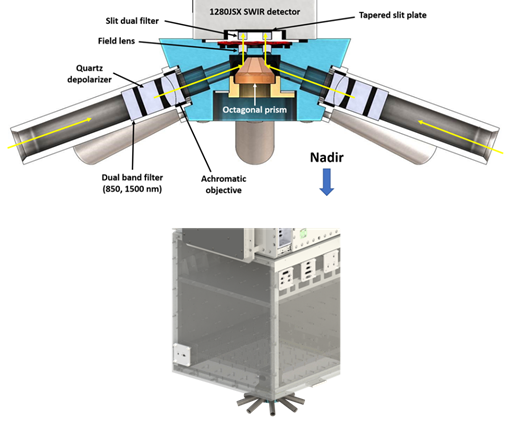News
SSAIHQ CMS Display Portlet
SSAI In The News
Breadcrumb
SSAI’s MASTAR Engineering Team Selected to Build its Successor, ARGOS
Matt Deland, a Chief Research Scientist at SSAI, is the Principal Investigator for one of three projects recently funded by the NASA In-space Validation of Earth Science Technology (InVEST) program. His team is tasked with building a small instrument called ARGOS (Aerosol Radiometer for Global Observation of the Stratosphere) that will be launched on a satellite in Fall 2023.
 Stratospheric aerosols impact Earth’s energy budget through their direct radiative effects. The magnitude and sign of this impact is highly uncertain and variable, owing to limited knowledge of aerosol particle properties and their spatial and temporal distributions. Moreover, perturbations to the naturally occurring background stratospheric aerosol layer are often caused by volcanic eruptions and dramatic pyrocumulonimbus injections of smoke from large wildfire/thunderstorm complexes. These events happen frequently (~several times per year) and can impact the aerosol loading and properties for months to years afterward.
Stratospheric aerosols impact Earth’s energy budget through their direct radiative effects. The magnitude and sign of this impact is highly uncertain and variable, owing to limited knowledge of aerosol particle properties and their spatial and temporal distributions. Moreover, perturbations to the naturally occurring background stratospheric aerosol layer are often caused by volcanic eruptions and dramatic pyrocumulonimbus injections of smoke from large wildfire/thunderstorm complexes. These events happen frequently (~several times per year) and can impact the aerosol loading and properties for months to years afterward.
The most effective source of stratospheric aerosol extinction data comes from satellite limb scattering measurements, which provide greatly increased spatial sampling compared to occultation measurements. The Ozone Mapping and Profiling Suite (OMPS) Limb Profiler (LP) on the Suomi National Polar-orbiting Partnership (S-NPP) satellite currently provides daily aerosol extinction profile data from limb scattering measurements. While these data are a valuable resource for model studies and recent eruptions, the OMPS LP viewing geometry creates a factor of 30 difference in sensitivity to aerosol extinction between Southern Hemisphere and Northern Hemisphere observations. Furthermore, OMPS LP observations also have large spatial gaps between consecutive orbits.
The ARGOS instrument will collect limb scattering data at several wavelengths in multiple viewing directions simultaneously. Observations of the same location along the orbit track at different scattering angles will provide more balanced measurement sensitivity throughout the orbit compared to OMPS LP. These data also help constrain the aerosol phase function, and thus the particle size distribution, enabling more accurate retrieval of extinction profiles from limb scattering measurements. The multiple limb views of ARGOS provide additional sampling of the inhomogeneous aerosol field. Such denser sampling has been shown to reduce the uncertainty in model calculations of post-volcanic eruption global aerosol loading by a factor of 2-3. ARGOS uses a simplified version of the OMPS LP optical design, featuring spectral bandpass filters for wavelength selection, and a central prism to enable a compact footprint.
ARGOS is the successor to the MASTAR (Multi-Angle Stratospheric Aerosol Radiometer) instrument that was also developed and built by Matt’s team. This time, the SSAI-led instrument team will develop and deliver an improved instrument within one year from program initiation. Currently, plans are for ARGOS to be ready for launch on a small satellite within 6-9 months following instrument delivery. MASTAR is currently at TRL 5, and ARGOS will reach TRL 6 following completion of on-orbit testing and operations.

